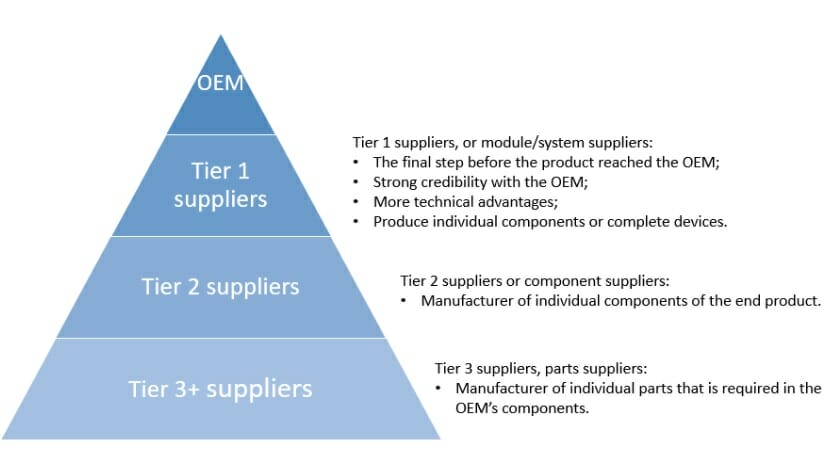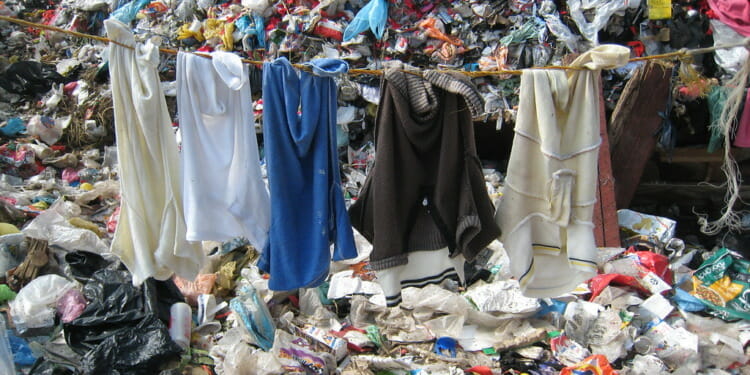Editor’s Note: Greenwashing is turning more sophisticated. Two months ago, the news spread that something was wrong with MSCI, an American finance company known as a leader in ESG rankings guiding investments into sustainable business. Bloomberg BusinessWeek, in a widely read article with the arresting title The ESG Mirage, argued that the MSCI ratings are nothing more than a clever strategy to fool investors into thinking they are engaging in green finance when in fact they are investing in business as usual. At the time, we provided guidance to our readers with an industry insider’s tips on how to tell if a company is greenwashing. Here are more insights into greenwashing from an expert on supply chain resilience problems.
Consumers and investors are viewing their new world through an ESG lens (environmental, social and corporate governance).
As conscious capitalism takes hold of society, companies are capitalizing through greenwashing consumers and investors at risk of deception.
The fast fashion sector misleads consumers at a whole new level. It’s responsible for 10% of global carbon emissions, pollutes rivers, exhausts water sources and 85% of all finished textile goods end up in landfills each year.
Apparel brands have launched “sustainable” clothing lines in wake of the new consumer appetite and market opportunity. Unfortunately, the majority of these product claims engage in the sin of falsely advertising their non-sustainable products as “eco-friendly”, “green” and “ethical”.
This unethical act is called “Greenwashing” and governments are cracking down.
#1 of the sins of Greenwashing: 59% of green claims made by apparel brands found to be unsubstantiated or misleading
Greenwashing is when a brand overstates its ethical and environmental claim.
Companies that advertise products that have hidden trade-offs (e.g., the product is recyclable but is manufactured in hazardous working conditions), have no proof of the eco claims, uses vague implications of actual sustainable initiatives (like Chanel did), exaggerate/lie about their environmental benefits, or worship false labels, for example adding trees or the colour green on their label to create an eco-friendly image.
A study conducted in June 2021 by Changing Markets Foundation, found that 59% of green claims made by apparel brands for products were unsubstantiated or misleading.
The report analyzed green claims by H&M, ASOS and M&S and declared that 91% of these claims were stained by the sin of vagueness and didn’t actually stand for real green products.
#2 and #3 of the sins of greenwashing
2. Opportunism
The global ethical fashion market is expected to grow at a compound annual growth rate (CAGR) of 9.7% from $6.35 billion to $10.11 billion in 2025.
Additionally, Gen Z consumers are overall more environmentally conscious buyers, their morals and values push them towards sustainable and conscious shopping habits.
79% of consumers say sustainable fashion is important to them, however, due to the lack of eco-awareness and public knowledge – 26% are unsure where their clothes are manufactured.
Thus, profit-greedy corporations use greenwashing as a marketing strategy to differentiate themselves from the competition and appeal to the socially conscious consumer using buzzwords such as “eco-friendly” and “ethical”, or “environmentally friendly” or labels such as “cfc free”, “plastic free” and capture the ever-growing market.
3. Operational challenges
Running a sustainability marketing campaign is significantly easier than addressing complex questions related to supply chain visibility and material science, that’s why we’re talking about sins of greenwashing, as one of them is without any doubt lazyness/negligence.
In practice, big brands have a complete lack of visibility into their supply chain. They have very good relationships with larger strategic suppliers but lack visibility into who their sub-tier suppliers are beyond tier 1 (the partners with whom a business directly works). It’s commonplace for a non-compliant supplier to be involved in producing a component for a product without the awareness of brands and their tier 1 supplier.

Even after they have visibility, most compliance assessments are fulfilled through audits which can also have their limitations.
#4 among the sins of greenwashing: trade-offs
When consumers buy cheap clothes, they force companies to optimize their supply chains to minimize costs in order to remain competitive.
The industry supply chains move depending on labour costs. We are now seeing production move to Africa as labour costs in Asia have risen.
Cheap clothes = low-cost supply chain = high risk of ESG issues
Sustainability has a cost.
Executives must make sourcing and supply chain decisions that optimize for costs, sustainability, resilience and revenue opportunity. Miscalculations have enormous consequences on their competitive position. The complexity of these trade-offs is the barrier to driving real change in the supply chain. If it was simple, companies would do it. Inaction and the status quo are not going to get you fired.
#5 Fashion industry gets away with greenwashing by leveraging legal flaws
“Sustainability”, “ethical”, “eco-friendly”, or “green” does not have clear and standardized definitions, nor do they have any legal meaning.
Thus, the law cannot hold companies accountable for their unethical actions or lack of ethical actions. Nevertheless, governments have provided over 400 sustainability standards and certifications that are voluntary for producers, manufacturers, and others across industries to follow and showcase their transparency and commitment to the ESG practices.
The fashion industry has certificates such as “Certified B Corporation”, “Bluesign”, “BCI” that give brands a chance to be transparent and earn the title of being sustainable.
However, as these certifications are voluntary, time and resource-consuming – brands tend to opt-out of being certified and get away with their unethical practices and carry on with their sins of greenwashing.
Additionally, brands are able to create a sustainable image through advertising false claims, finding loopholes and hiding information because of the lack of regulation, public education and eco-awareness.
Time’s up – regulators aren’t going to sit on the sidelines
Regulators across the globe have made new regulations to hold various brands accountable for their unethical practices, forcing brands to only claim to be sustainable if they truly are.
President Joe Biden introduced the Uyghur Forced Labour Prevention Act, which bars the importation of products manufactured from forced labour in the Xinjiang region of China.
This act will enforce strategies such as compiling lists of entities that produce goods with forced labour in Xinjiang and entities that source material from that region, bar imports and enforce sanctions.
Additionally, a new law, The New York State Fashion Sustainability and Social Accountability Act (Fashion Act) may be enacted, which then will require fashion retailers and manufacturers that do business in New York and have global revenues exceeding $100 million to disclose detailed information about their environmental and social due diligence. This act gives the New York Attorney General authority to fine monetary penalties, injunctions, or other equitable relief.
Furthermore, The UK’s Competition and Markets Authority gave companies until December 31, 2021, to provide proof of their “eco-claims” or change their marketing materials to remove the misleading content. Authorities have already imposed fines and restrictions on large companies and will continue to do so. BMW and Shell had their ads reviewed and banned by the Advertising Standards Authority for being misleading.
What to expect moving forward, are the sins of greenwashing going to disappear?
In the wake of COVID-19, supply chains are undergoing a transformation driven by increased regulation and the private sector’s realization that the old way has failed. From the government, we can expect increased crackdown from regulators on sustainability claims and greater legislation demanding supply chain transparency and ESG compliance.
From companies, we can expect continued greenwashing due to how lucrative the market is and the complexity of making real change. But, as a concious buyer, you should always do your homework, and learn to spot greenwashing signs right on the get-go.
However, the companies which outperform and win will be those that use data and mathematical modeling to optimize their supply chain decision-making.
These are the companies that will be able to tell real stories of profitable sustainability.
Are these brands greenwashing?
Are Nike and Adidas greenwashing? The answer is baffling
Is Uniqlo’s ‘LifeWear’ as Sustainable as it Claims?
Chanel: greenwashing or actual green luxury?
Editor’s Note: The opinions expressed here by Impakter.com columnists are their own, not those of Impakter.com. — In the Featured Photo: View of the rubbish where donkey owners work, and in some cases live, at Nesa’s giant rubbish dump Featured Photo Credit: Flickr cc










